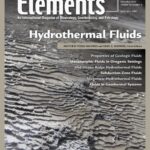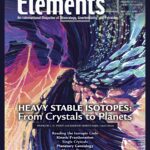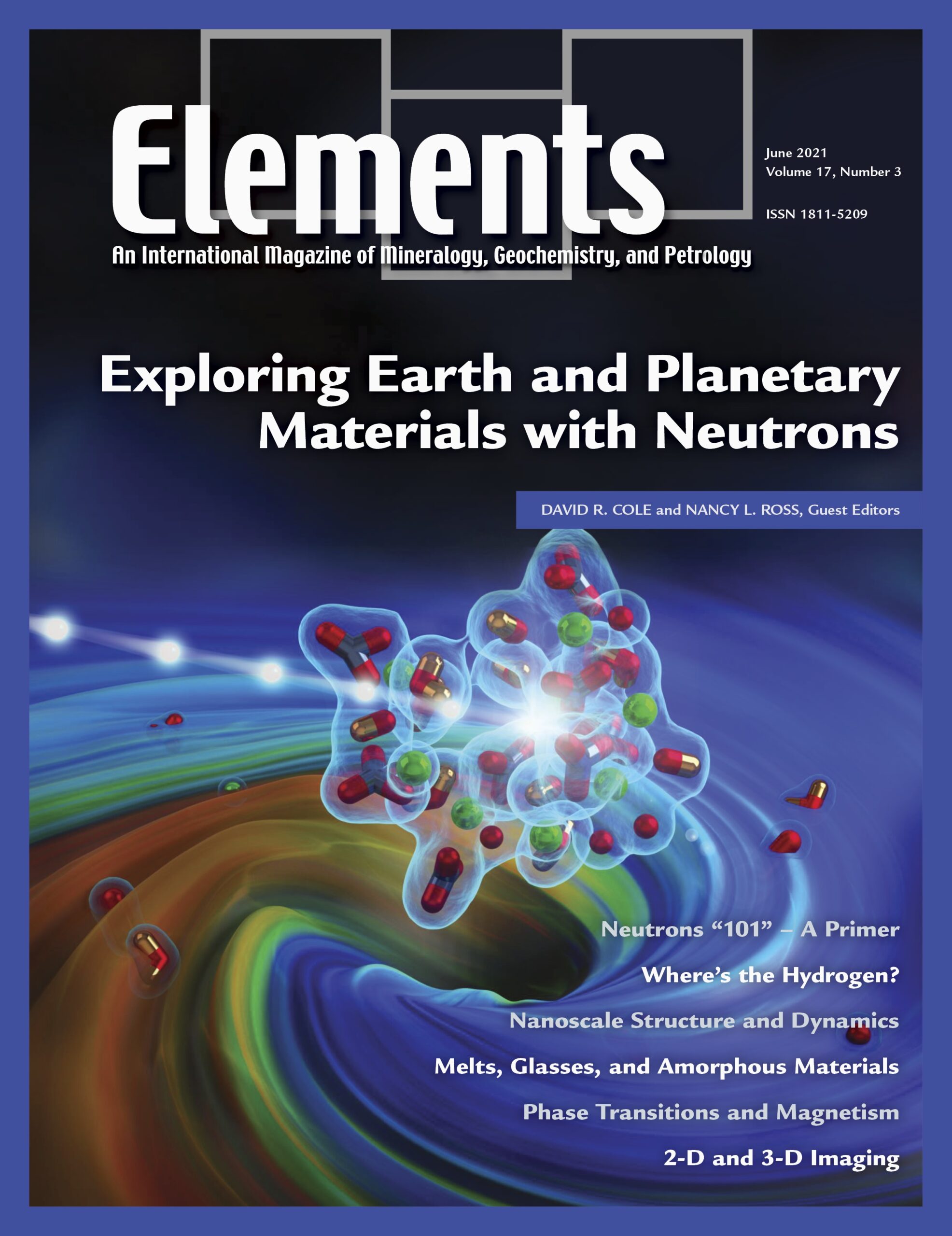
Hydrothermal Fluids, December 2020, Vol. 16, No. 6
June 28, 2024
Heavy Stable Isotopes: From Crystals To Planets, December 2021, Vol. 17, No. 6
June 28, 2024Exploring Earth And Planetary Materials With Neutrons, June 2021, Vol. 17, No. 3
$20.00
For over half a century, the structural details and the dynamics of atomic arrangements in materials have been determined using neutron-based scattering and absorption measurements. Neutron scattering experiments have contributed valuable information on geological materials and how these interact with fluids.
Exploring Earth And Planetary Materials With Neutrons
June 2021, Vol. 17, No. 3
For over half a century, the structural details and the dynamics of atomic arrangements in materials have been determined using neutron-based scattering and absorption measurements. Neutron scattering experiments have contributed valuable information on geological materials and how these interact with fluids. In situ studies of transformations and fundamental properties can emulate diverse environments, from Earth’s surface to its deep interior. Potential growth of the “neutron community” is being realized with the development of new and improved neutron sources. This issue of Elements familiarizes the reader with the basic concepts of neutron scattering, the methods that are available to Earth scientists, provide a summary of facilities around the world, and give key applications of the technique.
Why You’ll Love Elements Magazine:
- Expert Contributors: Articles written by renowned researchers in the field of geoscience.
- Engaging Content: Join a community of readers who are passionate about Elements.
- Exceptional Quality: Each issue is printed on high-quality paper with stunning visuals and detailed illustrations that bring complex scientific concepts to life.
Order your copy of the June 2021 issue of Elements magazine today and delve into exploring Earth and planetary materials with neutrons.
Related products
-
Diamonds, March 2005, Vol. 1, No. 2
$20.00Diamond, the fascinating ultrahard mineral, is the focus of considerable interest and scientific research. Recent advances particularly relevant to geoscientists include: diamond as a recorder of Earth processes from the perspective of inclusions, chemistry, and conditions of formation; synthesis for research applications and processing to modify color and physical properties, important to diamond gems and anvils; the implications of nanodiamonds from meteorites.
-
Arsenic, April 2006, Vol. 2, No. 2
$20.00Arsenic is an element known throughout history as a classic poison. Currently, very small but highly significant concentrations of this element in drinking water supplies are causing massive health problems to many millions of people in some of the world’s poorest nations, and more localised sources related to mining and processing are also a concern.
-
Zircon – Tiny But Timely, February 2007, Vol. 3, No. 1
$20.00Where would Earth science be without zircon? As Earth’s timekeeper, zircon has proven to be a remarkable and versatile mineral, providing insights into deep time and ancient Earth processes. However, there is still much to learn about Earth’s history from zircon and its behaviour.




